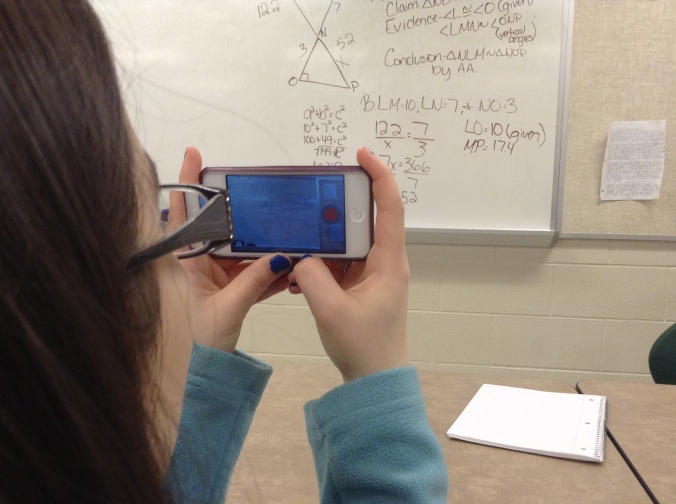
At #macul14, Erica Hamilton (@ericarhamilton) gave a wonderfully practical talk about how going 1:1 fundamentally changes the job of teaching.
For the last 6 years, I’ve been teaching in a 1:1 laptop program, although, to be fair, the number of students who have iOS or Android devices sends that ratio a lot closer to 2:1. With all that different technology in use, the instructional videos that our students just completed has been one big case study that supported practically everything that (soon-to-be) Dr. Hamilton discussed in Grand Rapids.
To summarize what I took from her discussion, teaching has always required a firm understanding of the content, the curriculum, the community, and few other things. Adding a 1:1 structure to the classroom doesn’t remove any of those classical understandings from the teacher, but also adds a variety of new knowledge bases that the teacher needs to draw on. The teacher now needs to understand software (and how to troubleshoot it), hardware (especially wonderful in BYOD schools), the network infrastructure (why are these computers so SLOW!?), and have some reasonable understanding of the tech background of the students in your classrooms.
In our project, I wanted my students to be able to record the video and publish it online, so I could collect and embed the videos in a central location for people to use as needed. As a math teacher, that’s a heck of a lot of non-mathy stuff that I need to know how to do. I needed to be able to use YouTube and Vimeo (and help troubleshoot error messages). I needed to introduce a few students to Dropbox when the mobile devices wouldn’t transfer the video to the computer (which was sometimes necessary). I needed to know how to create a website to host the resources (I chose Weebly). I needed to know how to embed the videos. And I needed to know how to support the students through these processes. (Side note: I was surprised how many of my high schoolers had never uploaded a video to YouTube.)
I’m a math teacher, right?
In addition to all of that, I wanted the students to be able to make high-quality videos. That means, I need to teach a bit about film making. Lighting, sound, how to stabilize the camera so it isn’t shaking, editing software so that you can edit out mistakes, and the delicate art of peer-review. These are things that students need to be taught or else you’ll get videos that give you motion sickness, writing you can’t read, and commentary that you can’t understand.
I’m a math teacher, right?
And here’s the kicker: if I don’t have all of that knowledge, I really can’t run that project. That awesome opportunity for my students REQUIRED that of me.
This… THIS… is why integrating instructional technology is so intimidating. This is why education is slow to adopt new things.
There was a time when I needed to know math and my students. Now, I need to know so incredibly much more. The wonderful work that Erica Hamilton is doing is helping to put words and structures to the complexity that comes with every step into new instructional technology. Every step a teacher takes, though it might just look like a small step, brings with a complex set of new knowledge that is essential to making the process work.
We’d be wise to understand that when we introduce a new piece of technology (especially a technology that will be simultaneously used by both teacher and students), we aren’t asking teachers to simply teach one new thing. We are asking teachers to learn a whole lot of (potentially) brand new stuff all at the same time.



